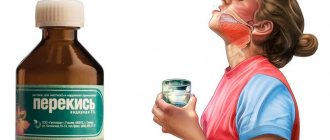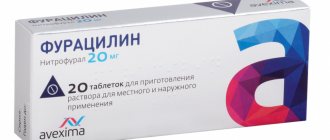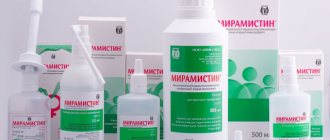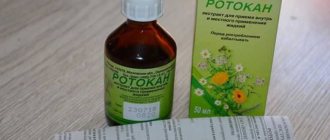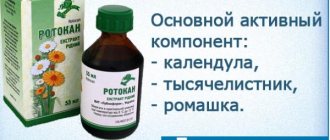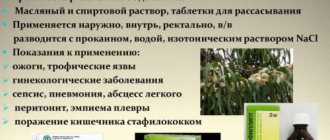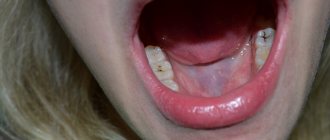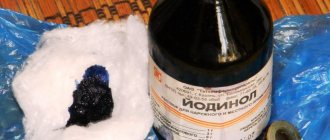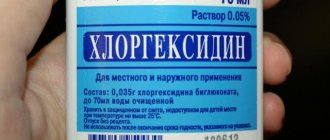The yellow solution called “Furacilin” has established itself as a powerful antiviral drug. The product for external and local use is used for various infectious lesions of the oral cavity and external defects of the body. The finely crystalline powder has a bitter taste, but is odorless, slightly soluble in water and alcohol and completely insoluble in ether. It belongs to the group of nitrofurans.
Application in dentistry of furatsilin:
- Restoration of gums after installation of implants and dentures;
- Therapeutic therapy for wounds, ulcers, inflammation;
- Treatment of throat diseases that may spread to the oral cavity;
- Treatment of fistula in the gum;
- Rinse for gum disease;
- Application for swelling, dissolution of seals after injection;
- Treatment of plaque in the corners of the mouth after candidiasis.
For what diseases can furatsilin be used for the oral cavity?
Nitrofural-based rinses are designed to eliminate infectious inflammation, remove pus and reduce pain.
List of diseases for which the drug is indicated
These may be infectious diseases such as:
- Laryngitis;
- Pharyngitis;
- Tonsillitis;
- Burn of the mucous membrane;
- Stomatitis;
- Gingivitis;
- Candidiasis;
- Scarlet fever;
- Periodontitis.
Each ailment is treated according to a special regimen prescribed by the attending physician. The rinsing regimen is also individual for the onset of a positive effect in the shortest possible time. It all depends on the nature of the disease and the symptoms the patient presents.
Pills
Furacilin tablets are used for self-preparation of solutions. Perfectly relieves symptoms of sore throat and nasal congestion. Tablets are convenient for storage. At any time, the patient has the opportunity to prepare a rinse solution for himself, which is very convenient. This can be done at work, at a party or on the road.
To prepare, grind the tablet to a powder and dissolve it in hot water. Use warm to rinse the nose, mouth and throat. Do not rinse with hot water to avoid damaging the mucous membrane.
Can children rinse their mouths?
Children from the age of six can already independently perform many hygiene procedures, including rinsing their throats. But it is better for adults to be present so that the child does not swallow the contents. If he has not mastered sanitary skills, then antibacterial lozenges are recommended instead of rinsing.
Mechanical treatment is used for a one-year-old baby. From two years old, the baby is given a rinse. A weak solution of furatsilin is taken into a special “bulb” for douching. The head is slightly tilted forward and the mouth is sprayed.
A safe method for treating the oral cavity for children is inhalation with Furacilin. Sessions cannot be performed without agreement with the pediatrician. If approved by a doctor, inhalations are done using a fresh solution each time. Depending on the degree of the disease, the doctor prescribes the number of sessions and the individual concentration of the drug. Its saturation should be low.
Ointment
Furacilin is also available in the form of an ointment. In this case, it effectively helps with burns, hypothermia, and also with purulent wounds. The composition of the ointment is slightly different from the solution. Contains additional components that have a calming and softening effect. The skin is smoothed, damaged tissues are regenerated, wounds and scars heal quickly.
In pharmacies you can purchase the product in tubes of 10 or 50 ml. Inside contains instructions for use. For minor surgical operations, ointment is prescribed to restore and remove the inflammatory process. It is often used to relieve inflammation of the ear canal.
Trade names
The active substance in known dosage forms is nitrofural (a word synonymous with “furatsilin”). Pharmaceutical companies now produce antimicrobial agents under different names:
- "Chlorhexidine";
- "Kombutek";
- "Lifuzol";
- "Miramestin";
- "Betadine";
- "Antiseptol".
There are also other names. The drugs are over-the-counter and it is recommended to follow general recommendations on storage conditions for drugs and use.
Paste
Furacilin in the form of a paste is used for prevention in the summer. It protects the skin from exposure to high temperatures. Often used in chemical plants where toxic chemicals are produced.
The paste must be applied in a thin layer to exposed skin. Can be used on the face. The composition does not contain harmful substances. Has an anti-inflammatory effect. After application, a thin film is formed that protects the skin from exposure to harmful substances. Wash off with plain water and soap.
What to prepare for rinsing gums at home?
Chamomile
A powerful natural antiseptic used to eliminate inflammation. Among herbs for rinsing gums, chamomile occupies a leading place.
How to use:
Pour 1 tablespoon into a glass of boiling water, let it brew for 40 minutes and rinse 3 times a day after meals.
Oak bark
Oak bark is an indispensable rinse for gums. Has an astringent and hemostatic effect.
How to use:
Pour 3 tablespoons of bark into a glass of boiling water, keep in a water bath for half an hour, strain, bring the volume to 200 milliliters with boiled water and rinse 5 times a day after meals.
Sage
Rinsing with sage has a pronounced anti-inflammatory effect.
How to use:
Pour 200 milliliters of boiling water over 1 tablespoon of leaves, leave for 40 minutes, rinse 3 times a day after meals.
Baking soda
A baking soda rinse for gums reduces pain and promotes healing.
How to use:
1 teaspoon per glass of boiled water. If your gums are inflamed, rinsing with soda should be done after eating, after brushing your teeth. Use immediately, do not store!
Salt
Rinsing gums with salt has a disinfecting effect.
How to use:
1 teaspoon of salt per 1 glass of boiled water. To enhance the medicinal effect, it is best to rinse with salt and soda at the same time!
5% iodine solution
Has an antimicrobial effect.
How to use:
To rinse your gums with iodine, one drop per glass of boiled water is enough. It is better if it is lightly salted, for example, sea salt.
Propolis
The waste product of bees relieves pain well and heals wounds.
How to use:
Propolis for rinsing gums is used in the form of an alcohol tincture: 30 drops per 1 glass of boiled water, rinse 3 times a day after meals.
If you don’t have time to brew herbs, you can just as easily use pharmaceutical alcohol tinctures made from them to rinse your gums.
Solution
Furacilin solution can be purchased at the pharmacy in ready-made form. However, if you travel often and carry it with you, then it would be more advisable to buy tablets and make the solution yourself. They are easier to store without worrying about packaging.
The solution is used to treat throat problems: pharyngitis, tonsillitis and other inflammatory diseases. If you plan to treat only at home, then buy a ready-made solution. It will already be cooked in the correct proportions. You will be sure of its sterility, and the packaging will be sealed.
When preparing yourself, you must carefully follow the instructions. Because if the solution turns out to be too concentrated, you can damage the mucous membrane, which is already inflamed. If the concentration is insufficient, the drug may not have the desired effect.
By rinsing with furatsilin, negative microorganisms are eliminated from the mucous membrane. When preparing the solution yourself, do it for 1 procedure so that it is always fresh. The drug should be stored in a cool, dark place.
Is gargling with furatsilin effective for adults with sore throat?
For angina, drugs with an antibacterial effect are needed, as well as other agents with local activity, similar to Furacilin. Various local medicines fight infectious agents, accelerate mucosal regeneration, and prevent the development of various complications.
Sore throat can have several varieties with similar symptoms.
The antiseptic substance is effective in relieving symptoms of all types of sore throat.
Manifestations of the disease may differ from each other. It all depends on the type of sore throat, whether there are complications or not. In case of throat pathology, it is recommended to rinse hourly with compositions with disinfecting components in order to prevent possible complications, such as necrotizing tonsillitis, in which tissues on the tonsils affected by infectious reagents begin to die.
Is furatsilin allowed during pregnancy and breastfeeding?
During pregnancy, furatsilin is approved for external use. The solution is recommended to be used for washing for preventive purposes and for the treatment of bacterial infections. Thrush often accompanies women during this period; furatsilin can reduce its manifestation and relieve the inflammatory process.
When breastfeeding, furatsilin is used externally with caution.
This is due to the fact that after using it, the milk may have a bitter taste and the baby will refuse the breast. Therefore, use during this period should be strictly monitored by a doctor to avoid negative consequences. This article is for informational purposes only, please consult your doctor for details! Ask your doctor about contraindications and side effects.
Types of dental abscess
Pyogenic bacteria enter healthy gum tissue through the bloodstream or due to mechanical damage. An abscess appears in the area of the affected element. When the abscess matures, the mucous membrane acquires a bluish tint, and a whitish spot or characteristic bubble appears. With its rupture, a fistula is formed in the periodontium, through which the contents flow out. This phenomenon does not lead to the disappearance of the problem, the inflammation remains. The pathology is indicated by the flow of pus from the gums when pressing on the affected area. There are several types of abscess:
- Desnevoy. The lesion is on the surface of the soft membrane and interdental papillae. The cause of infiltration is associated with the ingress of food debris and mechanical injuries. If detected early, it responds well to treatment.
- Periapical. A common type of pathology that develops as a result of untreated carious lesions or periodontitis. Infection of the dental root system leads to the accumulation of exudate in the upper part of the root. When immunity decreases, the periosteum of the unit and the mucous membrane are affected, a fistula is formed, purulent sacs appear above the gum, and pus is released.
- Periodontal. The infiltrate develops inside the gum tissue. Infected contents accumulate in the mucous membrane, forming a protrusion in the periodontal pocket. Due to the lack of a channel for fluid to flow out, damage occurs to the bone and soft tissue surrounding the diseased element. There is a high probability of developing periodontitis.
- Pericoronal. The pathological process is characteristic of erupting units. Bacteria and food debris fall under the “hood” of the mucous membrane. As a result, pus accumulates above the tooth, the gums swell and cause pain. The disease is dangerous due to complications: swelling of the neck, angina pectoris.
- Periodontal-endodontic. Infectious damage to the pulp and periodontal tissues occurs. There is a risk of periodontitis.
Flux is characterized by several stages of development, which have characteristic manifestations:
- Serous. Lightning current. The inside of the cheek and mucous membranes swell within a couple of days.
- Purulent. Continuous, debilitating, throbbing pain in the unit. Redness and swelling of the mucous membrane. Hyperthermia.
- Diffuse. Swelling and soreness of the entire surface of the oral cavity, affecting the nose, lips, and outer cheeks.
- Chronic. Gradual progression over months or years. Long-term remissions are followed by relapses. As the swelling decreases, the inflamed areas remain firm.
